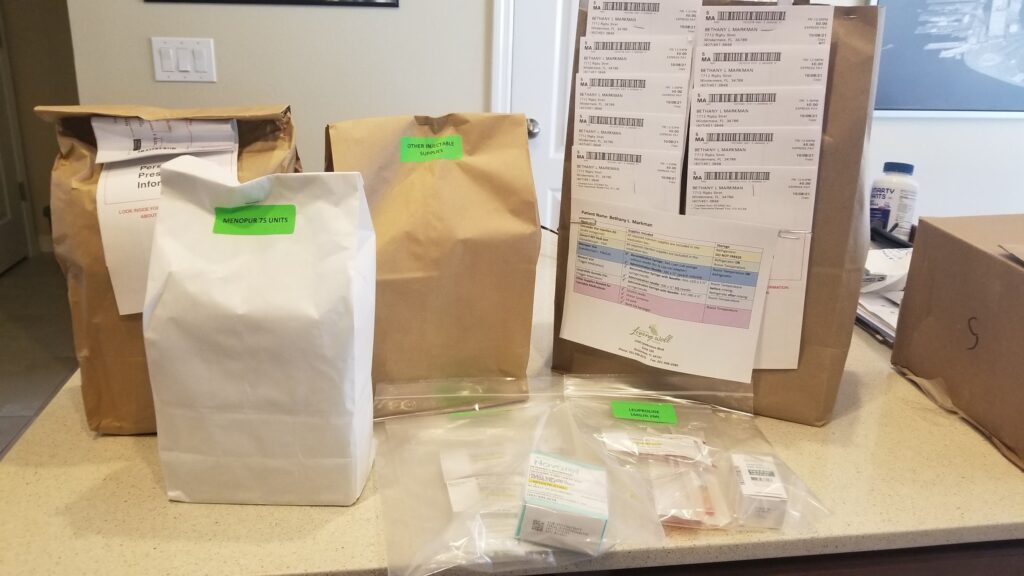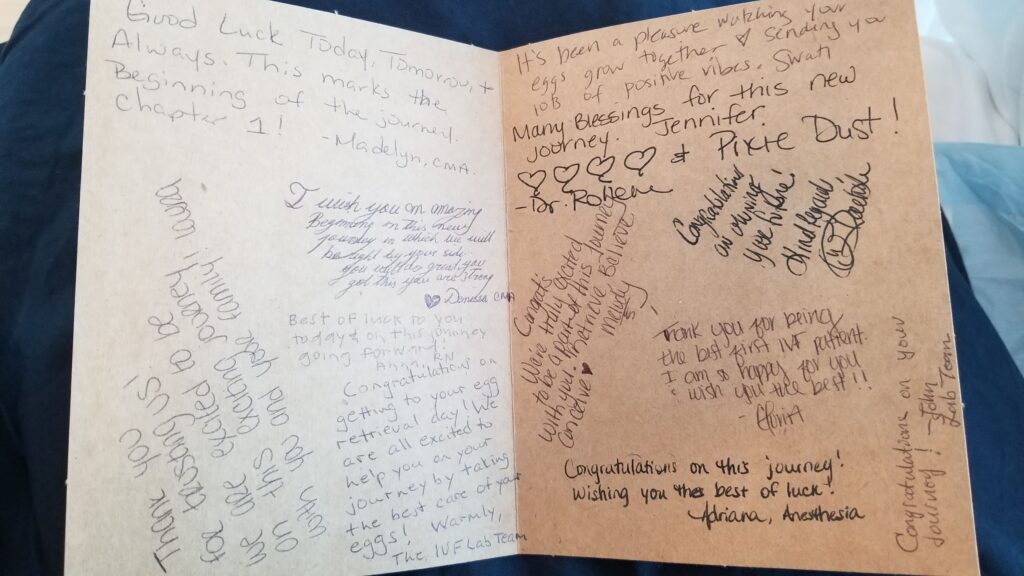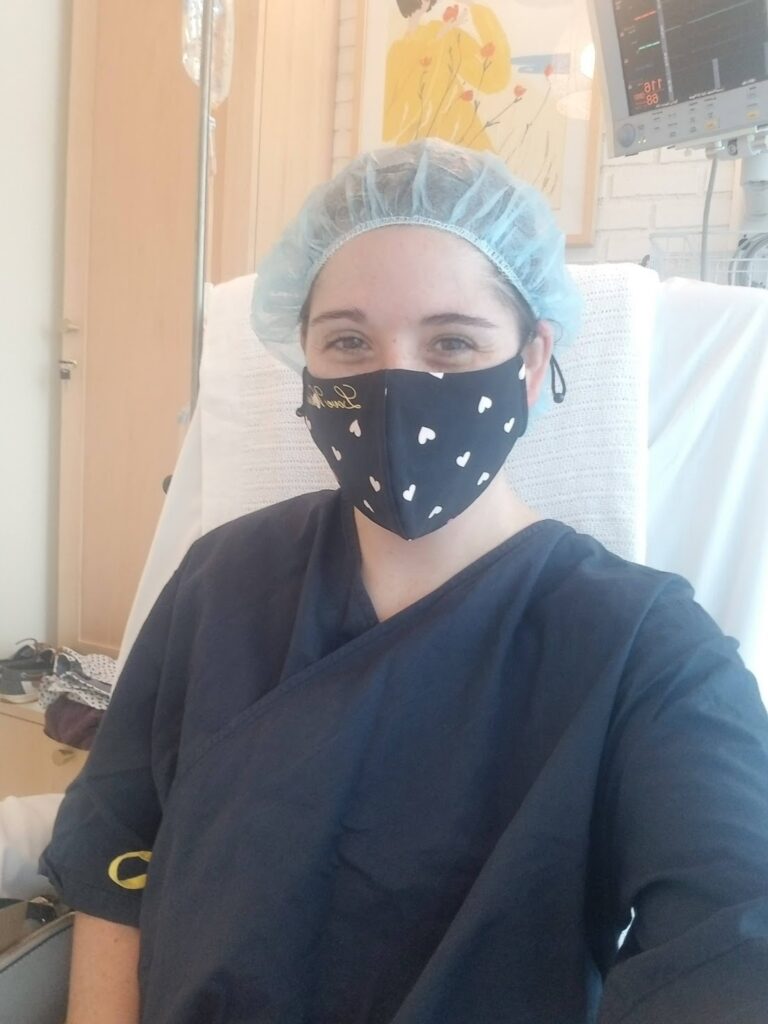Finally, in November 2021, Kindbody opened their IVF clinic and we could get the ball rolling again! At this point, I had been diagnosed with endometriosis and our best chance at getting pregnant would be through IVF. IVF (or In-Virto Fertilization), is a process where you try to get as many eggs as possible, then fertilize them with the sperm to create embryos. The embryos are then transferred into the uterus where it will implant and hopefully become a successful pregnancy!
Egg Retrieval

Tthere’s a lot of variation between clinics for each IVF cycle. At Kindbody, I started with birth control, which helps suppress the hormones so that the stimulation can be controlled by the doctor. About 5 days after stopping birth control, I went in for a baseline ultrasound and labs. This is to make sure that everything looked ready to go (meaning, no cysts or fibroids, etc). Everything was looking good, so I started on my two injections that evening. The goal of these medications are to stimulate the ovaries to make as many eggs as possible.
In a normal cycle, your body naturally stimulates one egg per month. In IVF, you want your body to create lots & lots of eggs. I continued the two shots for about a week while going in every other day to get labs and an ultrasound. The labs are making sure that the medications are working effectively to increase the hormones and also allow the doctor to see if any adjustments need to made to my medications. The ultrasound is monitoring the size of the follicles.
Once the follicles (which hold the egg) are a certain size, I added in a third injection to ensure that I didn’t ovulate. If I ovulated, I’d lose all the eggs. I continued the three injections for another 4 days and started going in for daily bloodwork and ultrasounds, and then it was time to trigger! Trigger means that I induce ovulation so that my eggs will release at the exact time that my doctor goes in to retrieve them!


Egg Retrieval Results
During the egg retrieval, I had 26 eggs that were retrieved from my follicles. It’s all a bit nuanced, so I’ll share what the embryologist shared with me about my results:
“We retrieved 26 eggs from your ovaries. We evaluated them for maturity because only mature eggs can be fertilized. Of the 17 mature eggs, 14 showed signs of normal fertilization. During the next few days, the fertilized egg should develop into an advanced embryo called a blastocyst. Some embryos will stop growing during this time. We hope that 50% will continue developing, but that is not always the case. Your embryos will be evaluated again on Day 5 through 7 of development in the laboratory to determine which embryos have developed to the blastocyst stage.”
On Day 6, I got an update which stated: “Of those, 4 developed to the blastocyst stage and were biopsied for preimplantation genetic testing (PGT).” Charles and I opted for PGT, which detects any chromosomal abnormalities. While some abnormalities can result in a successful pregnancy and birth (like Down Syndrome), the majority of chromosomal abnormalities result in a miscarriage. Of our 4 embryos, we had 3 that were genetically normal!
What’s Next
The recovery of an egg retrieval is pretty rough. I like to describe it as your follicles being small little balloons filled with water. When an egg is retrieved, the balloon is popped and all the fluid is leaked out until the body reabsorbs the fluid. It’s not very comfortable. To help avoid complications and reabsorb the fluid, it’s recommended to have lots of Gatorade and salty foods, which I TOTALLY didn’t mind… And then you start back on birth control to help stabilize the hormones again.
All Kindbody clinics close in December for quality assurance, so we had a month off to enjoy the holidays and recover before scheduling the next step: the embryo transfer!
I’m going to sign off Part 3 here, but check out Part 1 and Part 2 if you missed it! Stay tuned…



Leave a Reply